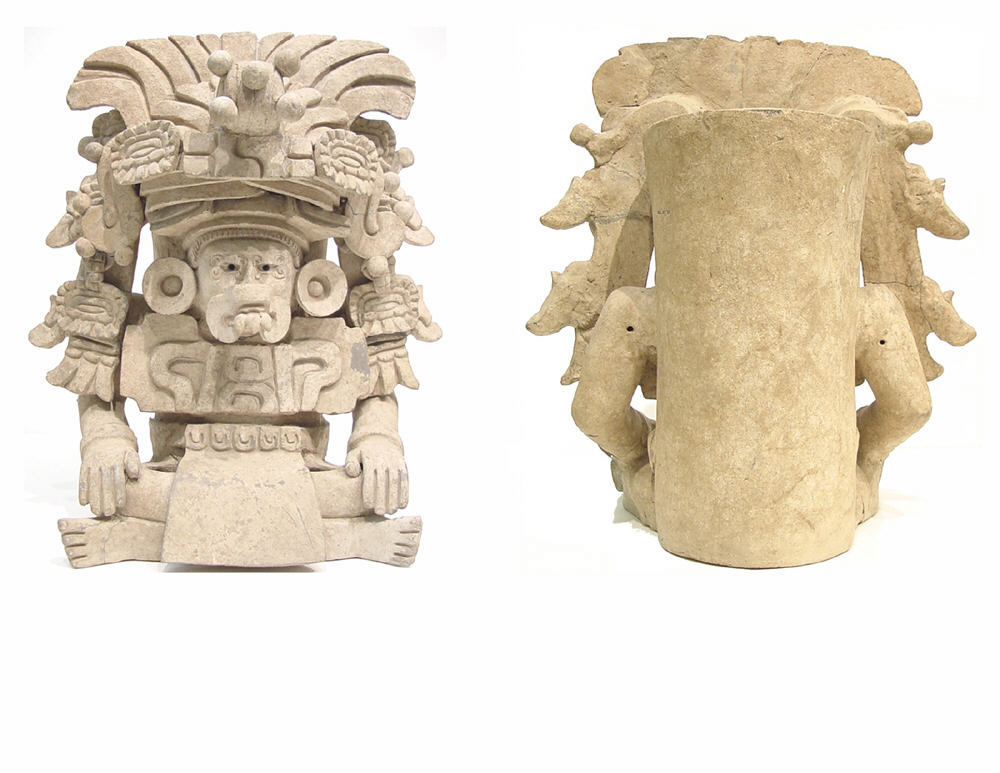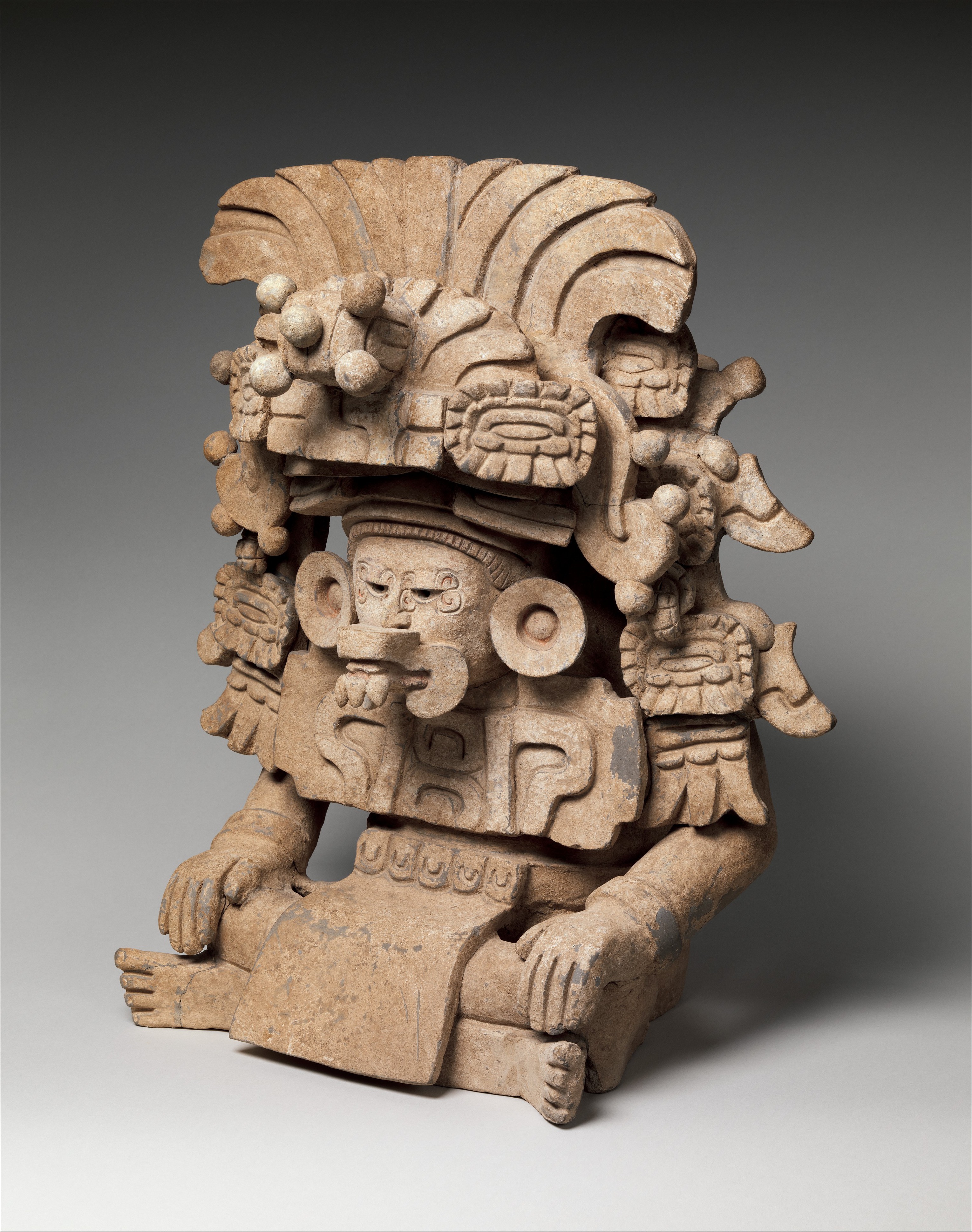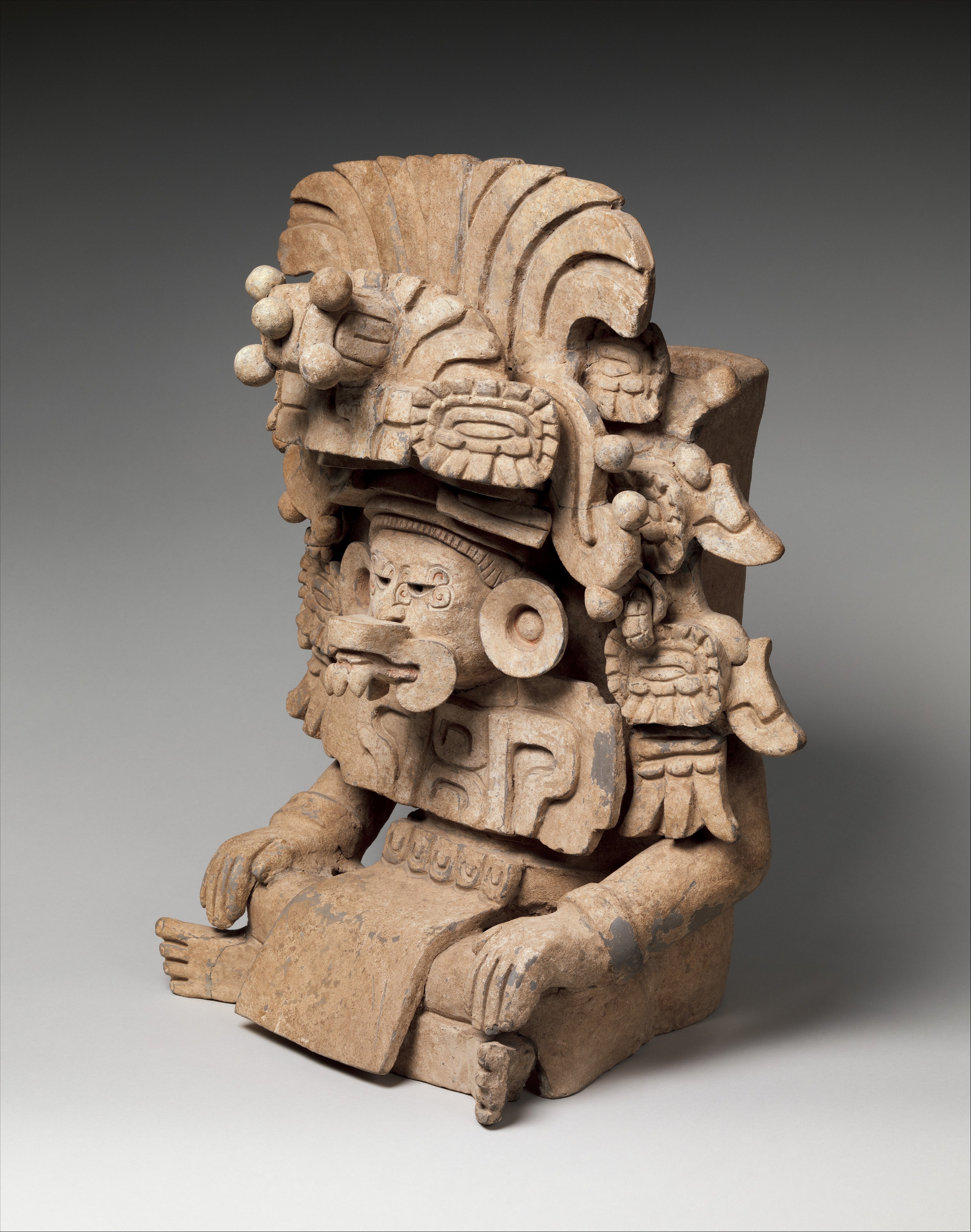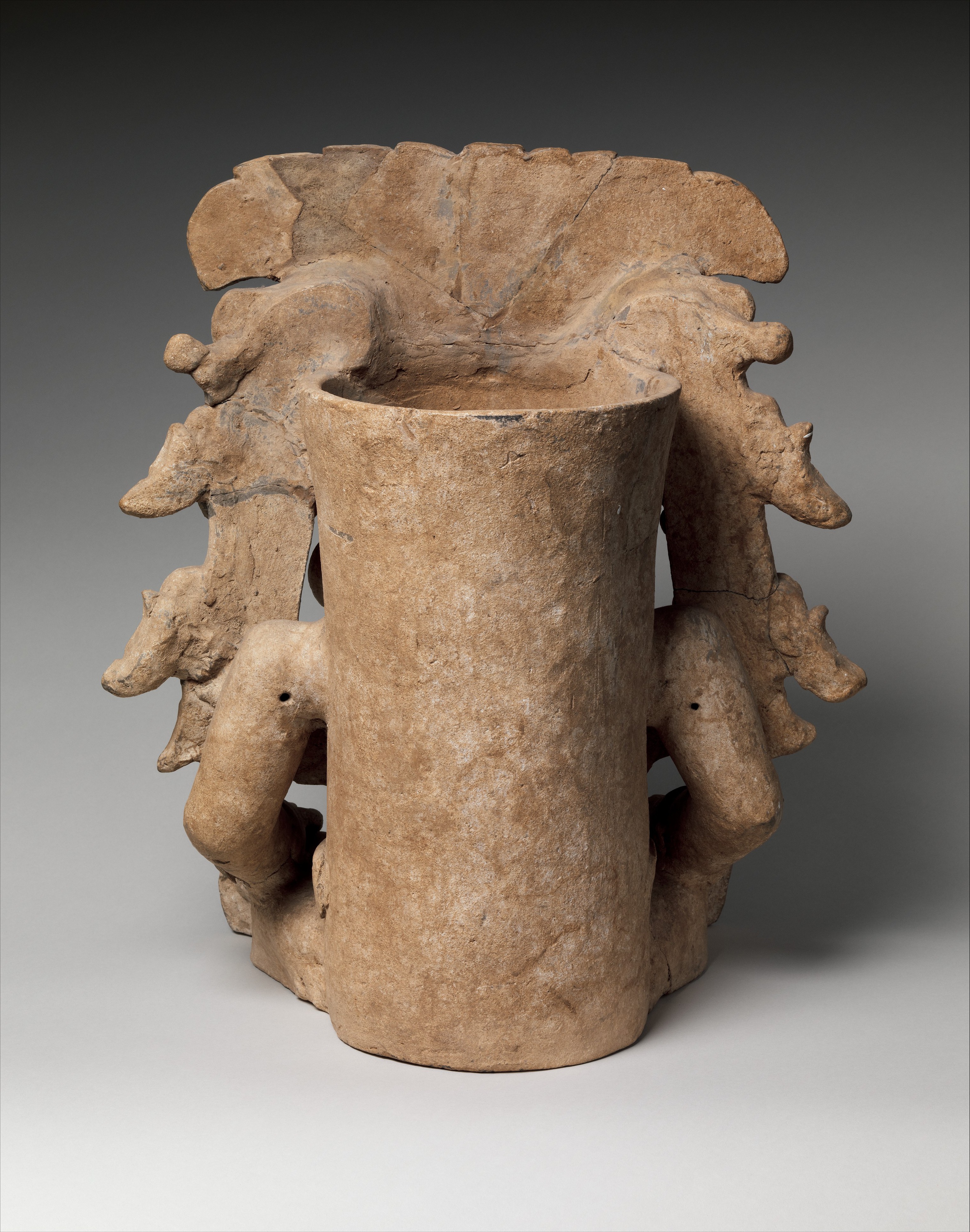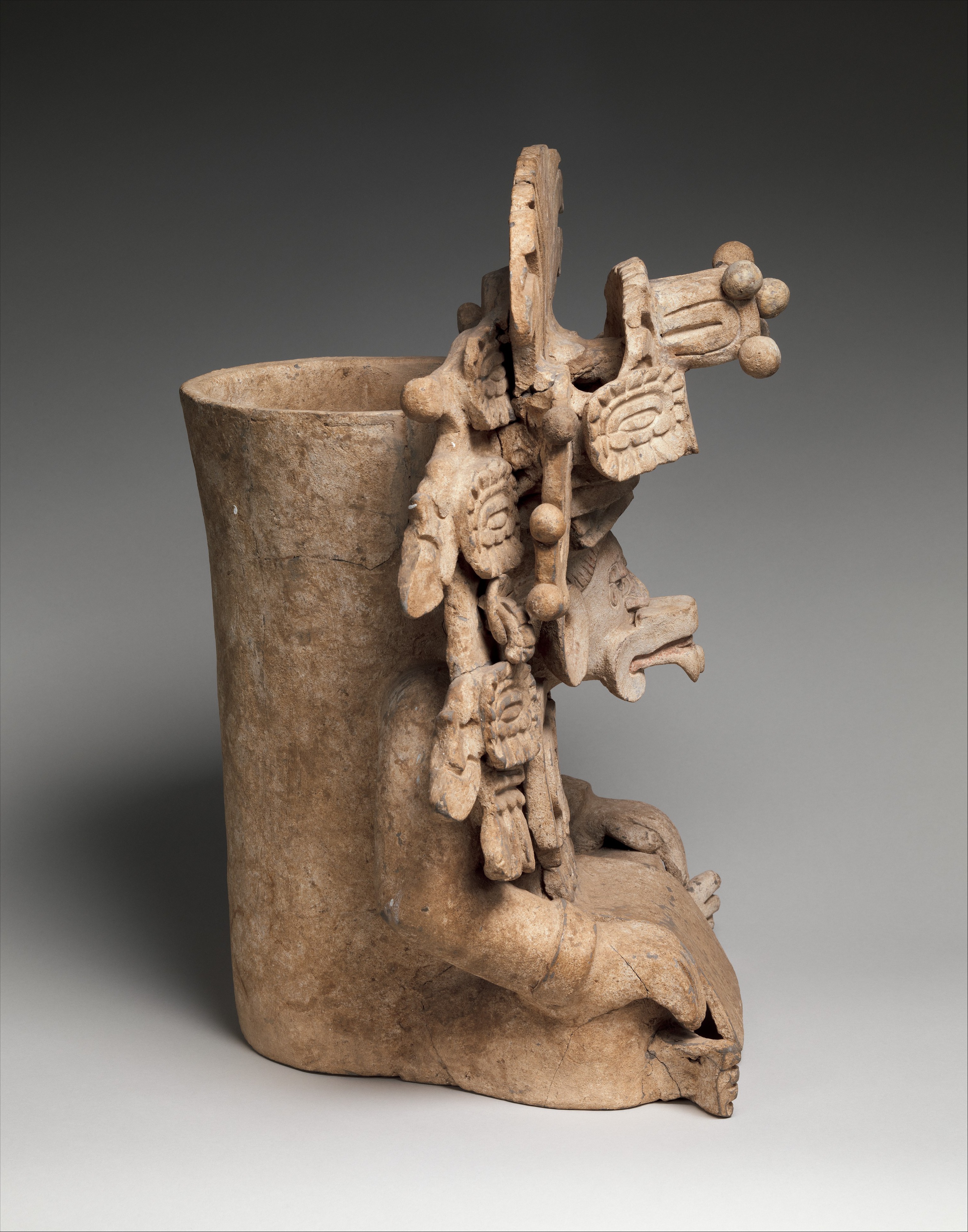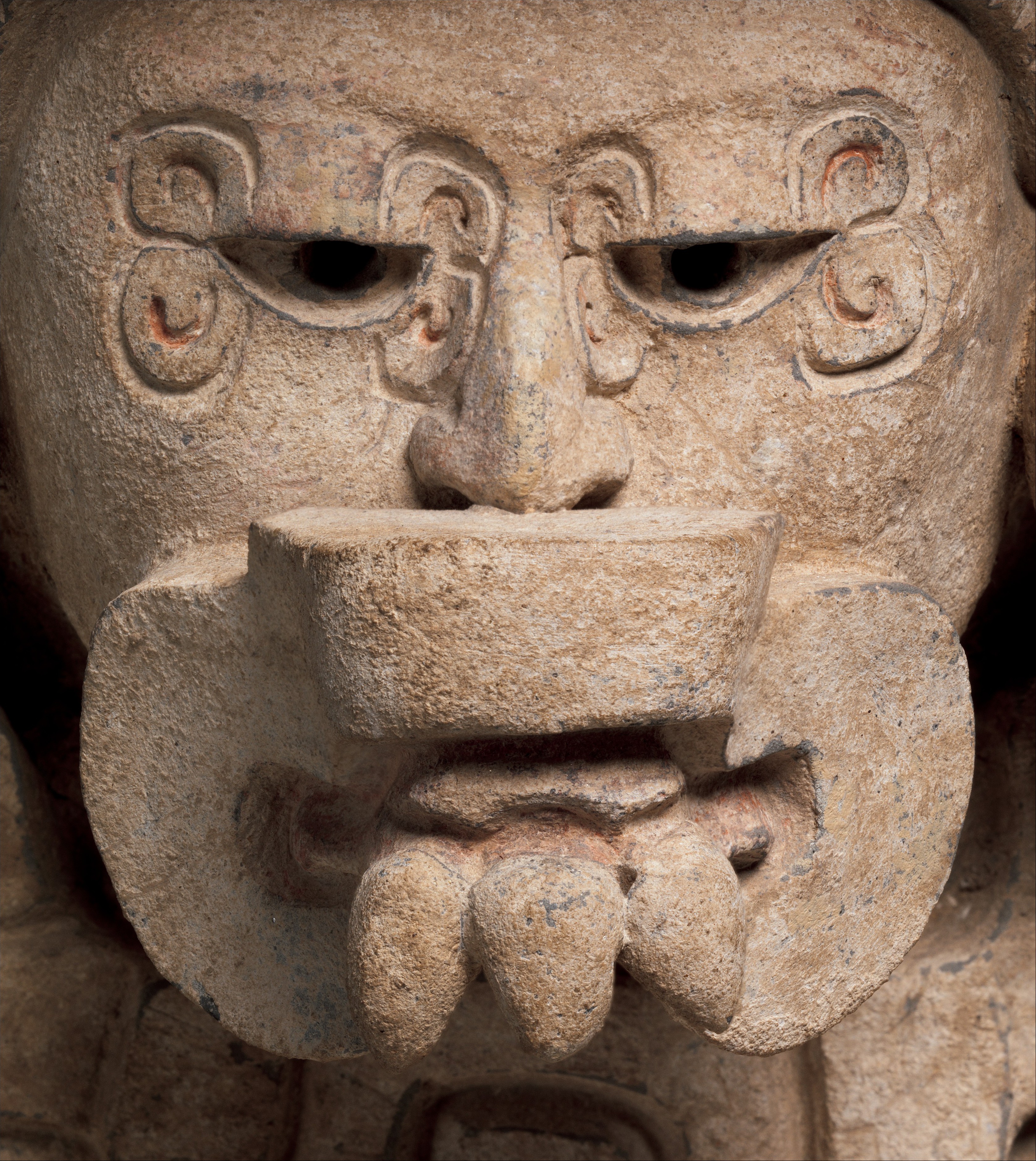Funerary Urn with Deity
Not on view
A seated figure forms the body of this effigy funerary urn, created in the style associated with the Zapotec site of Monte Albán in the southern Mexican state of Oaxaca. The individual, perhaps a deity or a human impersonating a god, rests his hands on his knees and leans slightly forward. The stoic gaze of the figure is interrupted by a large buccal mask that protrudes from his mouth, including three sharp fangs. Spiral-shaped elements incised on either side of each eye might represent tattoos or scarification. The head is accented with red pigment, suggesting that the figure would have once been brightly painted. He also wears large round earflares, a wide pectoral with hieroglyphic elements, and a loincloth fastened with five u-shaped elements. The figure’s elaborate headdress dominates the composition. A crown of feathers protrudes upward from a diadem that has knotted elements and an ornament with a quincunx of circular adornments. Vegetal elements emerge from both sizes, and two tassels dangle down to the figure’s shoulders. Mold-made feathered medallions are attached to the diadem and tassels. The undecorated cylindrical body of the vessel may once have held cremated remains of an important individual.
Monte Albán was a large center in the Valley of Oaxaca, occupied for many centuries beginning in the late first millennium B.C. by Zapotec peoples who constructed distinctive architecture at the hilltop site. Elaborate lineage tombs at Monte Alban contained groups of funerary urns representing deities and celebrating the ancestors held within.
Further reading
Blanton, Richard E., Gary W. Feinman, Stephen A. Kowalewski, and Linda M. Nicholas. Ancient Oaxaca: The Monte Albán State. Cambridge University Press, 1999.
Caso, Alfonso. Exploraciones en Oaxaca: Quinta y sexta temporadas 1936–1937. Publicación (Pan American Institute of Geography. Tacubaya, Mexico: Impreso en la Editorial "Cvltvra", 1938.
Caso, Alfonso, Ignacio Bernal, and Jorge R. Acosta. La cerámica de Monte Albán. INAH Memoria No. 13, 1967.
Caso, Alfonso, and Ignacio Bernal. Urnas de Oaxaca. INAH Memoria No. 2, 1952.
Easby, Elizabeth Kennedy, and John F. Scott. Before Cortes: Sculpture of Middle America. New York, The Metropolitan Museum of Art. Cat. 157, 1970 .
Feinman, Gary M. A Diachronic Perspective on the Prehispanic Ceramic Tradition in the Valley of Oaxaca. In Ceramics of Ancient America: Multidisciplinary Approaches, Yumi Park Huntington, Dean E. Arnold, and Johanna Minich, eds. University Press of Florida, 2018.
Joyce, Arthur A. Sacred Space and Social Relations in the Valley of Oaxaca. In Mesoamerican Archaeology: Theory and Practice, Julia A. Hendon and Rosemary A. Joyce, eds., pp. 192-216. Blackwell, 2004.
Sellen, Adam T. Catalogue of Zapotec Effigy Vessels. Foundation for the Advancement of Mesoamerican Studies, Inc., 2005, Kerr 1, http://research.famsi.org/zapotec/zapotec_list.php?_allSearch=kerr&hold_search=&tab=zapotec&title=Zapotec+Effigy+Vessels.
Sellen, Adam T. Sowing the Blood with the Maize: Zapotec Effigy Vessels and Agricultural Ritual. Ancient Mesoamerica, Vol. 22, No. 1, pp. 71-80, 2011.
LaGamma, Alisa, Joanne Pillsbury, Yaëlle Biro, and James Doyle. "Recent Acquisitions: A Selection: 2014–2016." The Metropolitan Museum of Art Bulletin (Fall 2016), p. 17.
Marcus, Joyce. Zapotec Monuments and Political History. Memoirs of the Museum of Anthropology, University of Michigan, No. 61, 2020
Marcus, Joyce, and Kent V. Flannery. Zapotec Civilization: How Urban Society Evolved in Mexico’s Oaxaca Valley. Thames and Hudson, 1996.
Robles García, Nelly M., ed. Sociedad y patrimonio arqueológico en el valle de Oaxaca : memoria de la Segunda Mesa Redonda de Monte Albán. INAH, 2002.
Due to rights restrictions, this image cannot be enlarged, viewed at full screen, or downloaded.
This artwork is meant to be viewed from right to left. Scroll left to view more.


